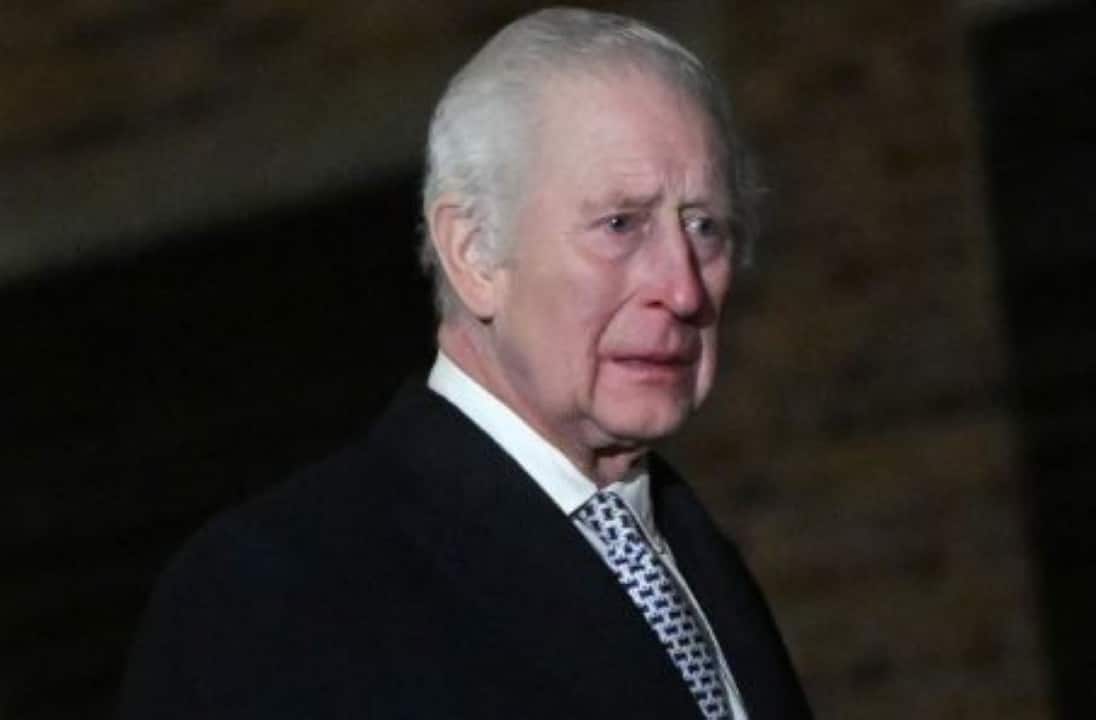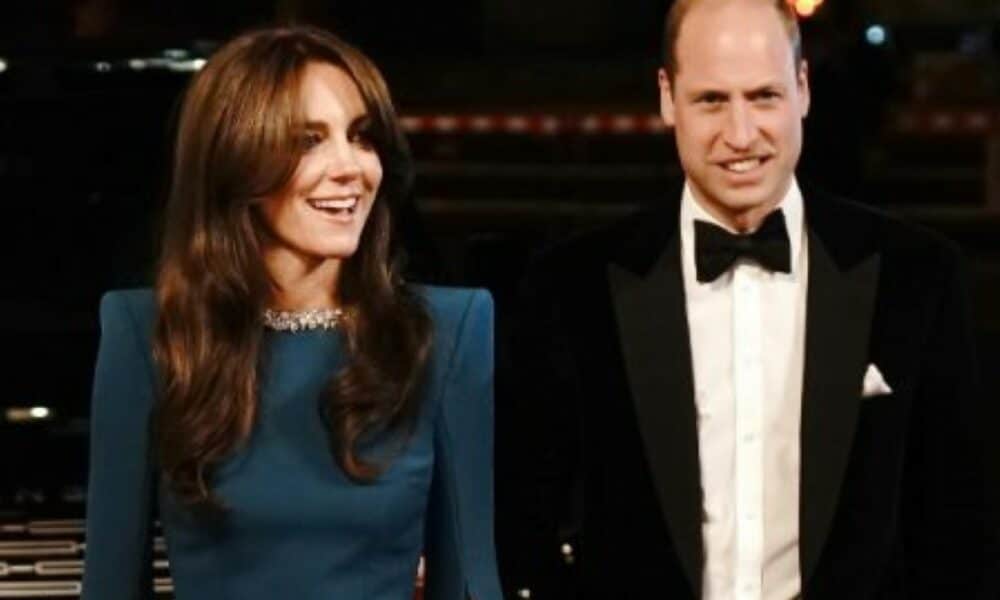Share
Tweet
Share
Share
The British monarchy is navigating a delicate transition, with Prince William, aged 42, taking on prominent roles due to King Charles III’s fragile health. Diagnosed with cancer in 2024, the king, who ascended the throne in 2022 following Queen Elizabeth II’s death, has scaled back public duties, shifting critical responsibilities to his heir. William, the Prince of Wales, has represented the Crown at global events, such as the reopening of Notre-Dame Cathedral in Paris, and spearheaded initiatives like the Earthshot Prize, a global environmental innovation award. Meanwhile, Kate Middleton, recovered from cancer, resumes public duties, reinforcing the image of a modern monarchy. The royal family, aware of the situation’s gravity, is accelerating preparations for a succession that may come sooner than anticipated, balancing tradition and innovation amid complex challenges.
This quiet transition reflects the urgency driven by Charles III’s condition, at 76 the oldest monarch to assume the British throne. In March 2025, he faced hospitalizations due to treatment side effects, limiting his schedule. William has taken on diplomatic engagements and management of the Duchy of Cornwall, a billion-pound property portfolio. Kate, 43, returned to events like the Together at Christmas concert, championing causes such as mental health. The couple, parents to George, Charlotte, and Louis, strive to maintain family normalcy while projecting a monarchy aligned with 21st-century issues, from sustainability to emotional well-being.
William’s preparation blends traditional duties with contemporary initiatives. He attended landmark ceremonies, like the 80th anniversary of D-Day in 2024, alongside world leaders, showcasing diplomatic finesse. His leadership of the Duchy of Cornwall includes affordable housing projects in Nansledan, Cornwall, aimed at serving local communities. These efforts signal a future king committed to practical change, ensuring the monarchy’s relevance amid public scrutiny and calls for modernization.
- Charles III’s health: Cancer diagnosed in 2024 limits royal duties.
- William’s role: Leads global events and Duchy of Cornwall management.
- Kate Middleton: Recovered, focuses on mental health and public events.
- Modern initiatives: Earthshot Prize and housing projects reshape the Crown.
The king’s health and the urgency of succession
King Charles III’s cancer diagnosis, announced months after his 2023 coronation, dramatically altered the monarchy’s dynamics. Following prostate surgery in January 2024, tests revealed the disease, prompting a treatment regimen including chemotherapy. By April 2025, the king resumed limited public appearances, but his reduced schedule shifted responsibilities to William. Queen Camilla, 77, who battled pneumonia in 2024, supports the monarch, but her health concerns further underscore the need to prepare William for an imminent reign.
William’s preparation is not a formal program but a hands-on immersion in royal duties. He attends state meetings, represents the Crown at international events, and champions causes like mental health and environmental preservation. This gradual transition aims to ensure continuity during instability. The monarchy faces additional challenges, such as the fallout from Harry and Meghan Markle’s 2020 exit, which sparked debates about its relevance. William, aware of these tensions, works to renew the Crown’s image, aligning it with a public demanding progress.
Privacy remains a priority for the royal couple. In 2022, William and Kate relocated to Adelaide Cottage in Windsor, seeking a secluded environment for their children. George, Charlotte, and Louis attend Lambrook School in Berkshire, and William engages in school events, like soccer matches, balancing royal duties with family life. This approach reflects their commitment to shielding their children from public scrutiny while William prepares for leadership.
Modernizing the monarchy under William’s leadership
William adopts a pragmatic style, contrasting with the formality of past generations. His management of the Duchy of Cornwall funds projects like St. Mary’s Community Hospital in the Isles of Scilly, improving local healthcare access. These initiatives highlight a future king attuned to regional needs, moving beyond ceremonial roles. He also promotes affordable housing in Nansledan, a sustainable community project, reinforcing his vision of a practical, engaged monarchy.
 King Charles III – Photo: Instagram
King Charles III – Photo: Instagram
The Earthshot Prize, launched in 2020, is a cornerstone of his public work. In 2025, it awarded £5 million to climate change solutions, drawing global attention. Inspired by Charles III’s environmental advocacy, William tailors this cause to engage youth and entrepreneurs, promoting innovative solutions. Kate complements this with her mental health leadership, supporting organizations like Shout, which aids those in crisis. Together, they project an accessible monarchy, addressing pressing social issues.
William also envisions roles for younger royals, such as Lady Louise Windsor and James, Viscount Severn, children of Prince Edward. Lady Louise, 21, admired for her discretion, may take on official duties, bringing youth to the monarchy. James, 17, is also a potential ally. This strategy aims to create a lean, dynamic Crown, responsive to a diverse public’s expectations.
- Earthshot Prize: £5 million for climate solutions annually.
- Local projects: St. Mary’s Hospital and Nansledan housing initiatives.
- Young royals: Lady Louise and James may take active roles.
- Family life: Adelaide Cottage ensures privacy in Windsor.
Family challenges and internal tensions
The royal family faces crises beyond Charles III’s health. The rift with Harry and Meghan, who stepped back from royal duties in 2020, remains a source of strain. Based in California, they pursue projects like a Netflix series and Princess Diana-related initiatives, stirring controversy in the UK. William, frustrated with his brother, reportedly plans to limit Harry’s involvement in the monarchy as king, signaling a permanent divide.
Prince Andrew, Charles III’s brother, adds complexity. Stripped of titles in 2022 due to his Jeffrey Epstein ties, he remains in the line of succession, fueling public debate. William counters these criticisms by prioritizing social causes and transparency, aiming to rebuild trust in the monarchy. These challenges demand a delicate balance as he prepares to lead under constant scrutiny.
Kate Middleton faced her own ordeal in 2024, with a cancer diagnosis that temporarily sidelined her from public life. William scaled back duties to support her, showcasing family resilience. Kate’s return, marked by events like Together at Christmas, strengthened her role in social causes. The couple leverages digital platforms, like social media, to connect with the public, breaking from the monarchy’s traditional formality.
The weight of the future crown
Assuming the throne is a duty William has prepared for since childhood, but recent events have heightened the pressure. Drawing inspiration from Elizabeth II’s 70-year reign, he seeks to adapt the monarchy to modern expectations, tackling issues like mental health, climate change, and inequality. His geography degree from the University of St. Andrews and military service as a search-and-rescue pilot shaped a results-driven approach.
His bond with Charles III, deepened by shared environmental interests, has evolved through delegated responsibilities. William takes on tasks once exclusive to the king, navigating emotional and practical challenges. The rapid succession of his father’s and wife’s cancer diagnoses tested his resilience, yet he remains focused on his future role. Analysts note his leadership blends continuity with innovation, preparing the monarchy for a new era.
Family life anchors William and Kate amid these demands. They shield George, Charlotte, and Louis from excessive exposure, ensuring a balanced childhood. George, 11, second in line to the throne, is gradually introduced to royal duties, but with care to preserve his youth. The choice of Lambrook School and involvement in local activities, like soccer games, reflect this commitment to normalcy.
Timeline of key succession events
Critical moments have shaped William’s path to the throne, reflecting Charles III’s health and his rising prominence:
- September 2022: Queen Elizabeth II’s death and Charles III’s ascension.
- February 2024: Charles III diagnosed with cancer post-surgery.
- March 2024: Kate Middleton begins chemotherapy for cancer.
- June 2024: William attends 80th D-Day anniversary events.
- January 2025: Kate announces cancer remission, resumes duties.
- March 2025: Charles III hospitalized for treatment complications.
- April 2025: William leads Notre-Dame reopening in Paris.
A monarchy in transformation
William faces a complex landscape, with challenges extending beyond Charles III’s health. The monarchy, under public scrutiny, must reinvent itself to stay relevant. William responds with initiatives like the Earthshot Prize, mobilizing millions for environmental causes. His management of the Duchy of Cornwall, valued at over £1 billion, funds community-impacting projects, bolstering his image as an engaged future king.
Kate Middleton plays a complementary role, leading mental health efforts. Her cancer recovery and public return strengthened the couple’s resilience narrative. Together, they use digital platforms to communicate directly, a departure from past formality. This approach signals a monarchy closer to younger generations, capable of addressing contemporary concerns.
William’s preparation also involves planning the monarchy’s future. He considers active roles for Lady Louise and James, aiming for a streamlined yet vibrant institution. This strategy addresses criticisms about the Crown’s relevance, especially amid tensions with Harry and Andrew. William balances tradition and modernity, paving the way for a reign that honors Elizabeth II’s legacy while tackling 21st-century challenges.
 British monarchy, Câncer, Charles III, Charles III health 2024, Duchy of Cornwall, Earthshot Prize, Kate Middleton, mental health, rince William, succession, William’s throne preparation
British monarchy, Câncer, Charles III, Charles III health 2024, Duchy of Cornwall, Earthshot Prize, Kate Middleton, mental health, rince William, succession, William’s throne preparation
